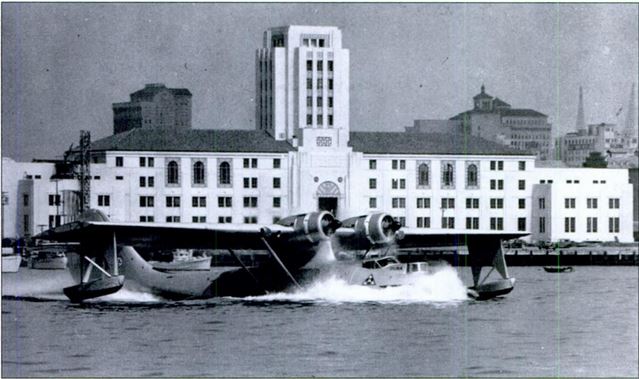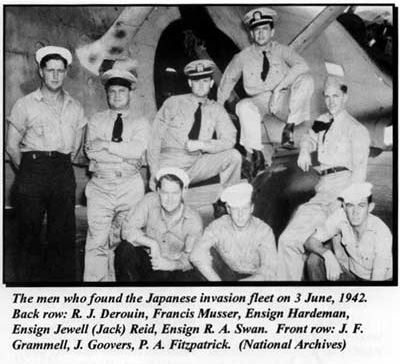PBY CATALINA Facts …. and other leading particulars
Recognizing the PBY Catalina Heritage Worldwide
More of the story
PBY Catalina Facts
Military Endurance record
The longest recorded military flight by a class C seaplane left from the Norfolk Virginia Naval Air Station October 10, 1935. Lieutenant Commander Knefler McGinnis, Lieutenant, James K. Averill, Thomas P. Wilkinson, and a crew of three flew the XP3Y-1 covering 2060 mi to Cristobal Harbor, Coco Solo Naval Air Station, Panama Canal Zone in 17 hours, 33 min.
On October 14th, 1935 they departed Coco Solo Naval Air Station and flew a record 3387 miles nonstop arriving at San Francisco, California on the 15th of October in 34 hours 51 minutes setting a record for the longest distance flown by a class C seaplane.
Richard Archbold’s Model 28 Catalina taxis on San Diego Bay in front of the landmark county administrative building in December 1937. During 1938 and 1939 Richard Archbold and his crew would complete the first flight around the world at its widest diameter, approximately at the equator. This flight, in a Model 28 Catalina included 3 firsts;
- the first flight across Australia by a seaplane
- the first flight across the Indian Ocean by any airplane
- the first flight across equatorial Africa by a seaplane.
Pioneer flight over the Indian Ocean
Towards the conclusion of the expedition in 1939, with Archbold intending to return to the USA across the Pacific, he was contacted by Captain P.G. Taylor, representing Australian interests which, with war impending, wanted to determine the practicality of an air route from Australia to Europe over the Indian Ocean and via Africa rather than Asia. It appeared that Guba II was the only suitable aircraft for the job at short notice. As Archbold was amenable to the project, his plane was effectively chartered for the crossing by the Australian government (which paid for fuel and other provisions used during the flight) and his flying crew augmented by Taylor as navigator.
The intended flight path across the Indian Ocean was from Port Hedland, Western Australia to the Cocos (Keeling) Islands, Diego Garcia, the Seychelles and Mombasa, Kenya. Apart from the initial leg of the flight, when the plane was forced, after leaving Port Hedland, to detour via Batavia (now Jakarta) because of bad weather, the flight was made without major problems. In Mombasa Taylor left the crew to return to Australia and Archbold continued the flight westwards, landing in New York in July 1939. (courtesy of Wikipedia)
Civilian Endurance record
While the PBY Catalina fulfilled its Military role as a long range patrol, escort and rescue aircraft they were also used successfully for commercial air travel. The longest commercial flights (in terms of time aloft) made in aviation history were the Qantas flights flown weekly from 1943 through to July 1945 over the Indian Ocean to Ceylon.
Non-stop service between Perth and Colombo, a distance of 3,592 nm (5,652 km)was offered by Qantas. As the PBY typically cruised at 110 knots, this took from 28 to 32 hours and was called the “flight of the double sunrise”, since the passengers saw two sunrises during their non-stop journey.
The flight was made with radio silence because of the possibility of Japanese attack and had a maximum payload of 1,000 lbs or three passengers plus 65 kg of armed forces and diplomatic mail. (14)

The Secret Order of the Double Sun Rise – Qantas and its Wartime Secret Indian Ocean Air Service
The Catalina was the very last type of flying boat type operated by Qantas. Most importantly, through its Catalina flying boat operations across the Indian Ocean between 1943 and 1945 Qantas created, and still holds, a world air service duration record that has never been broken – and probably never will!
In mid 1943, at a time when the war was being bitterly fought and Japan had complete domination over much of South East Asia, including the Indian Ocean, Qantas took delivery of five unarmed Catalina’s.
In June, Qantas engineers Norm Roberts and Colin Sigley began setting up a base at Nedlands on the Swan River but they had few facilities and received almost no support from the Department of Civil Aviation which did not support the establishment of this new air service even though the Australian Government required it. Facilities remained crude for much of the war and had it not been for the generous but informal support of an American Navy Catalina Patrol Wing nearby, the service would have been in serious trouble.
The only protection these ‘Cats’ had was their camouflage paint. These flying boats – their brave crews and skilled maintenance staff – were to operate a highly secret air service between Lake Koggala, Sri Lanka (then Ceylon) and Perth, Western Australia. Read More
A Few Gallons More
At the PBY Catalina Foundation’s 1994 reunion, Santa Rosa, California, we had a real treat. Bob Swan, the pilot/navigator of the PBY that first sited the Japanese Invasion of Midway on June 3, 1942 shared a remarkable piece of information.
Per Bob, his PBY had been searching for the Japanese invasion fleet for several days. Each day they flew 650 miles on the outward leg, turned 90 degrees fro about 100 miles and then returned to Midway.
PBY Catalina – Ron Schilling – Nolte Media
On each patrol, as they reached the 650 mile turning point, a Japanese twin engine Nel 96 plane would put a few holes in their beloved PBY. Even though they fired their 50 caliber blister guns at the meatball painted plane, no real kill was noted.Read More



